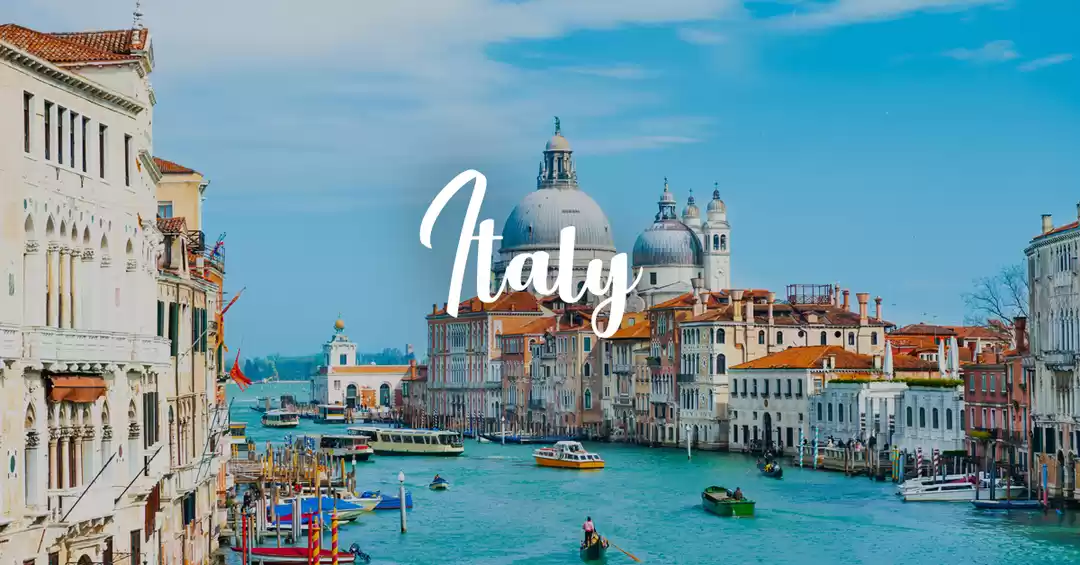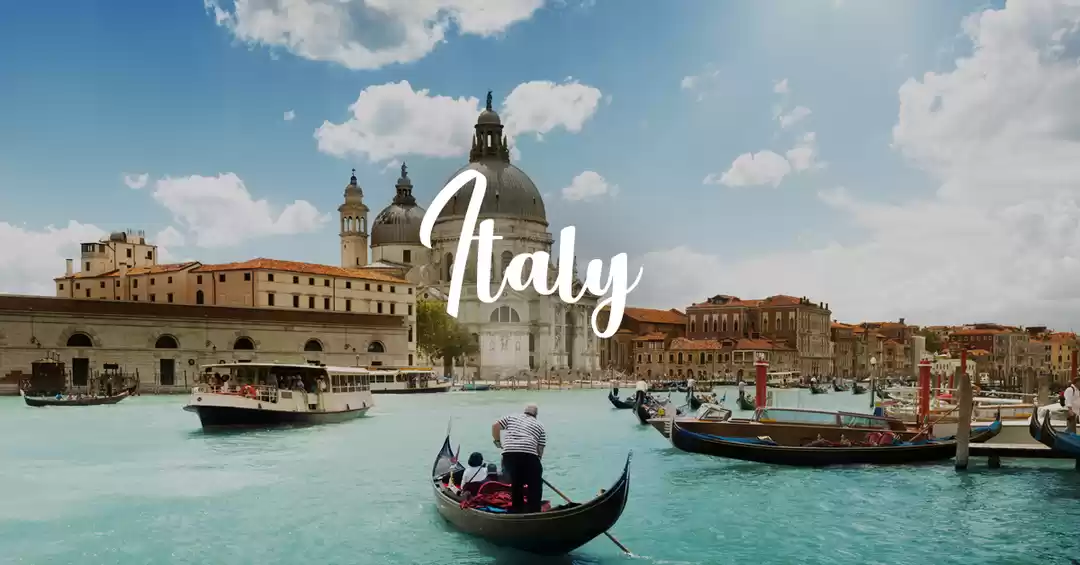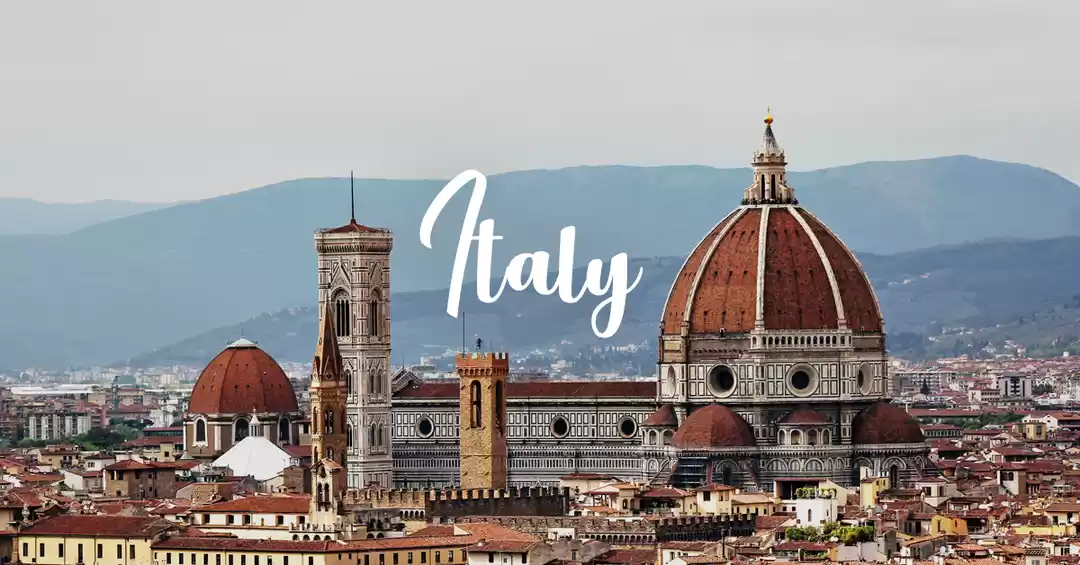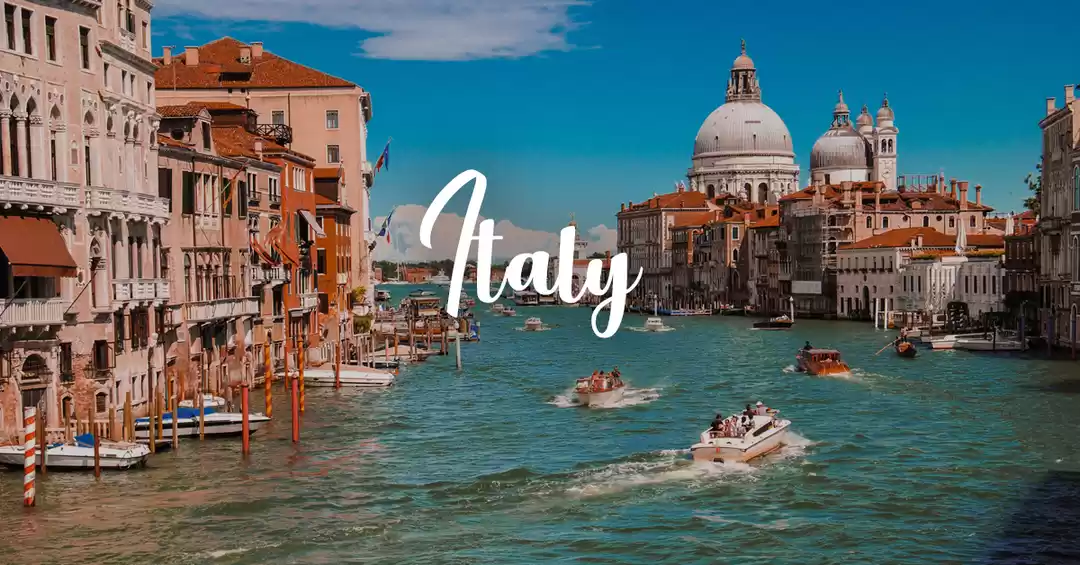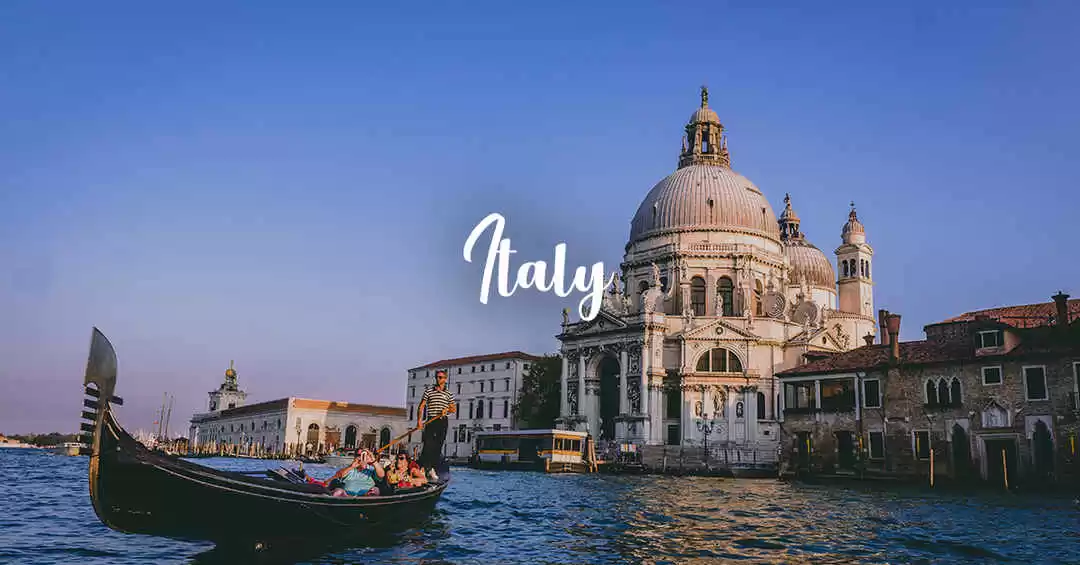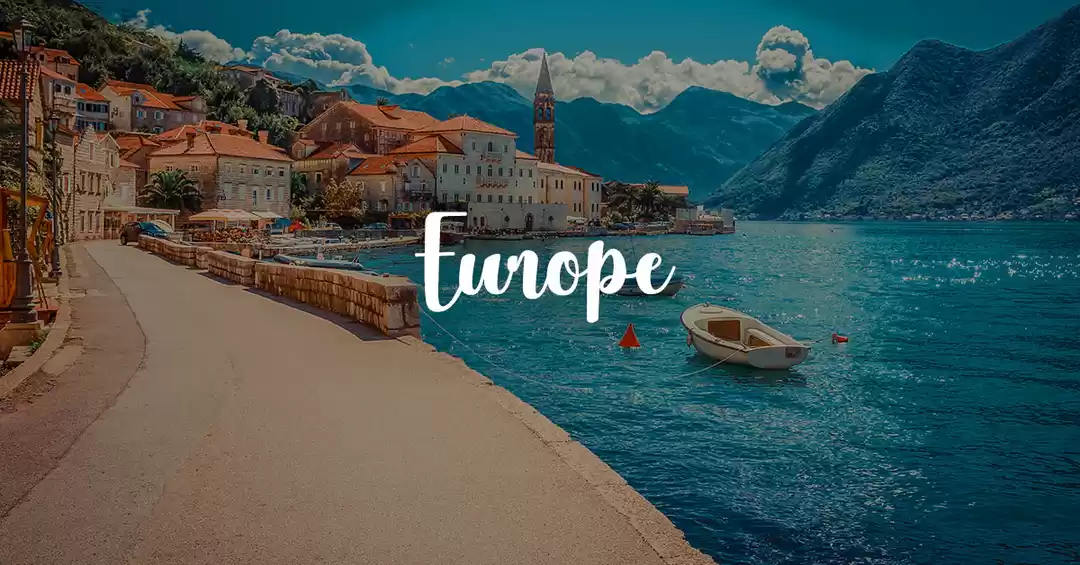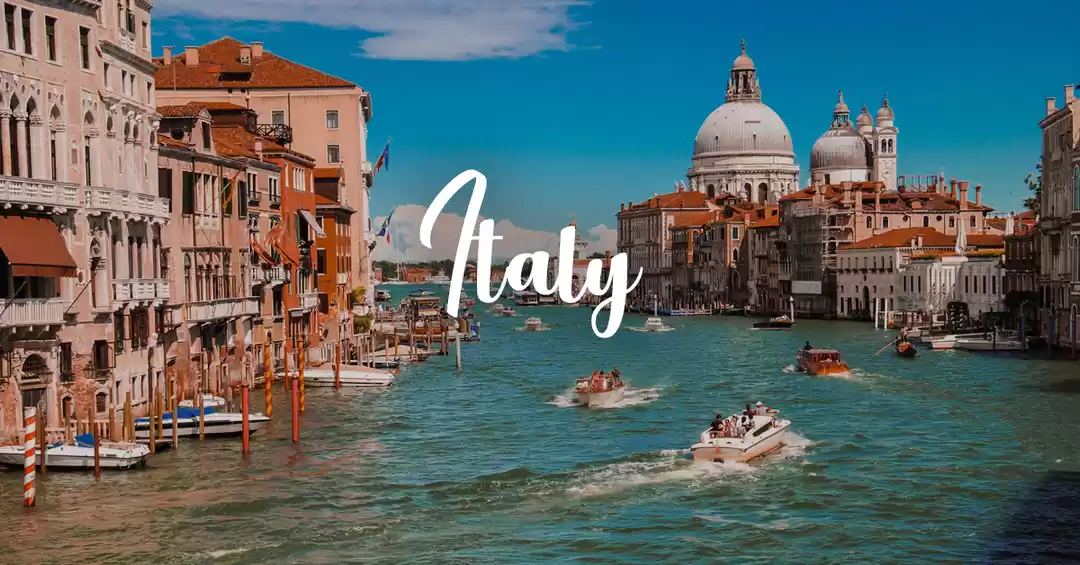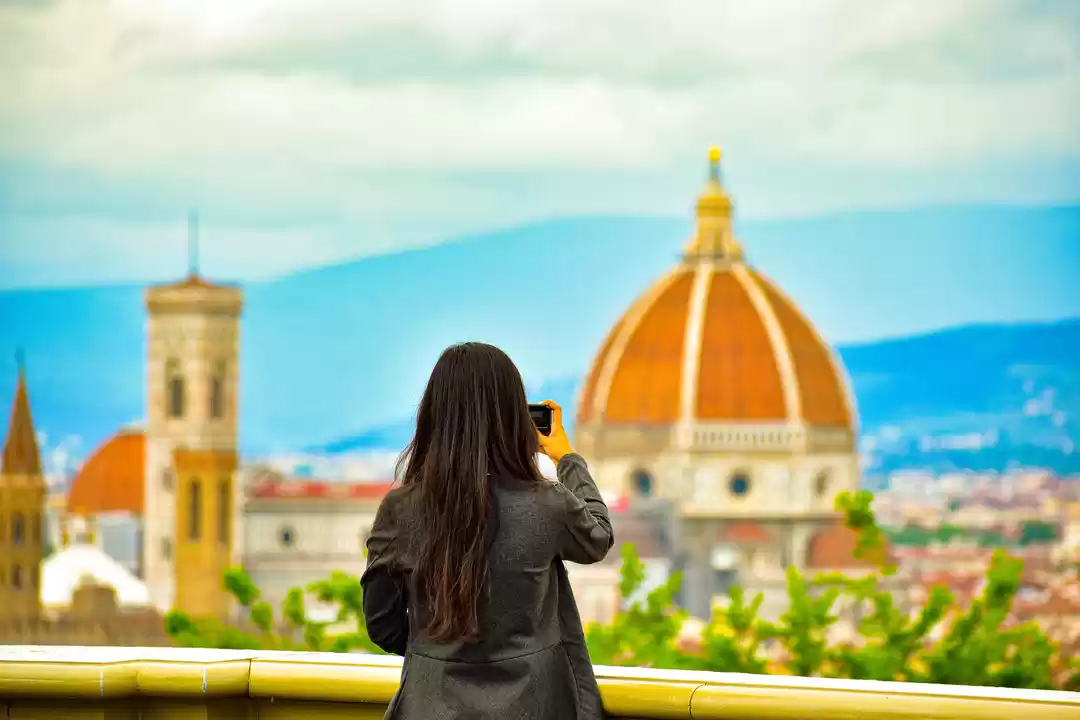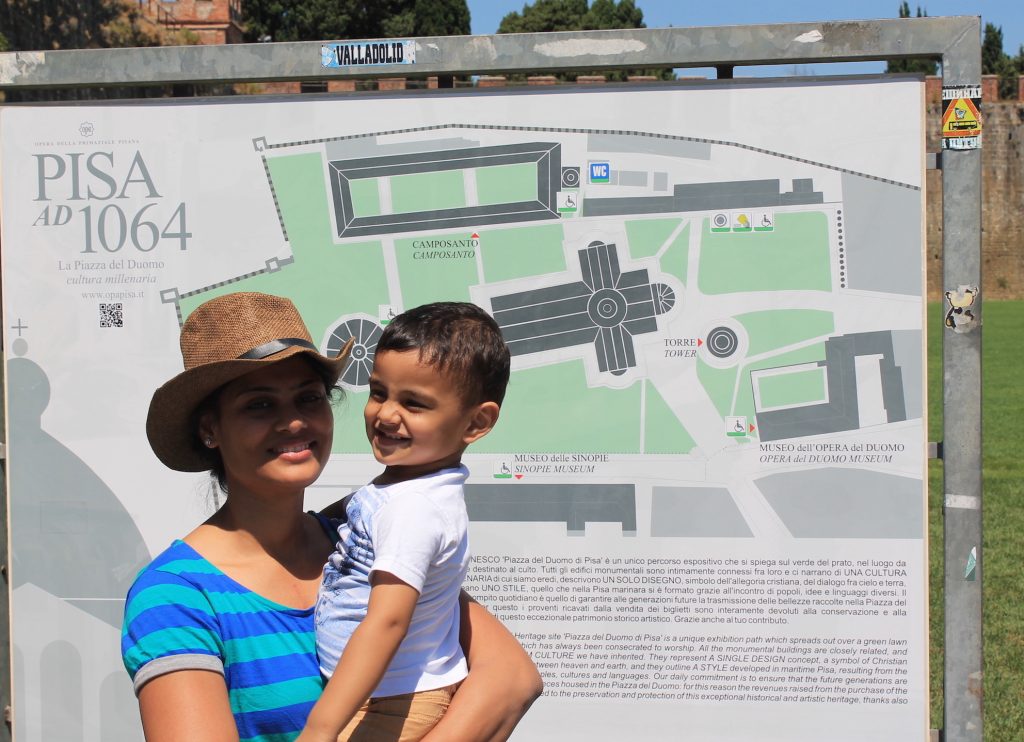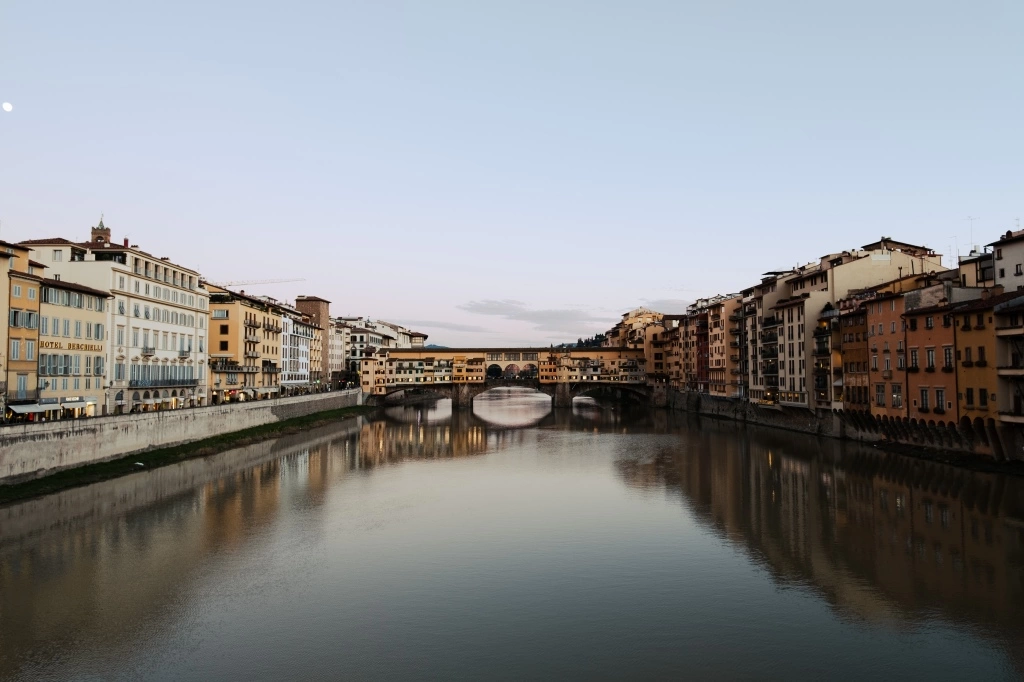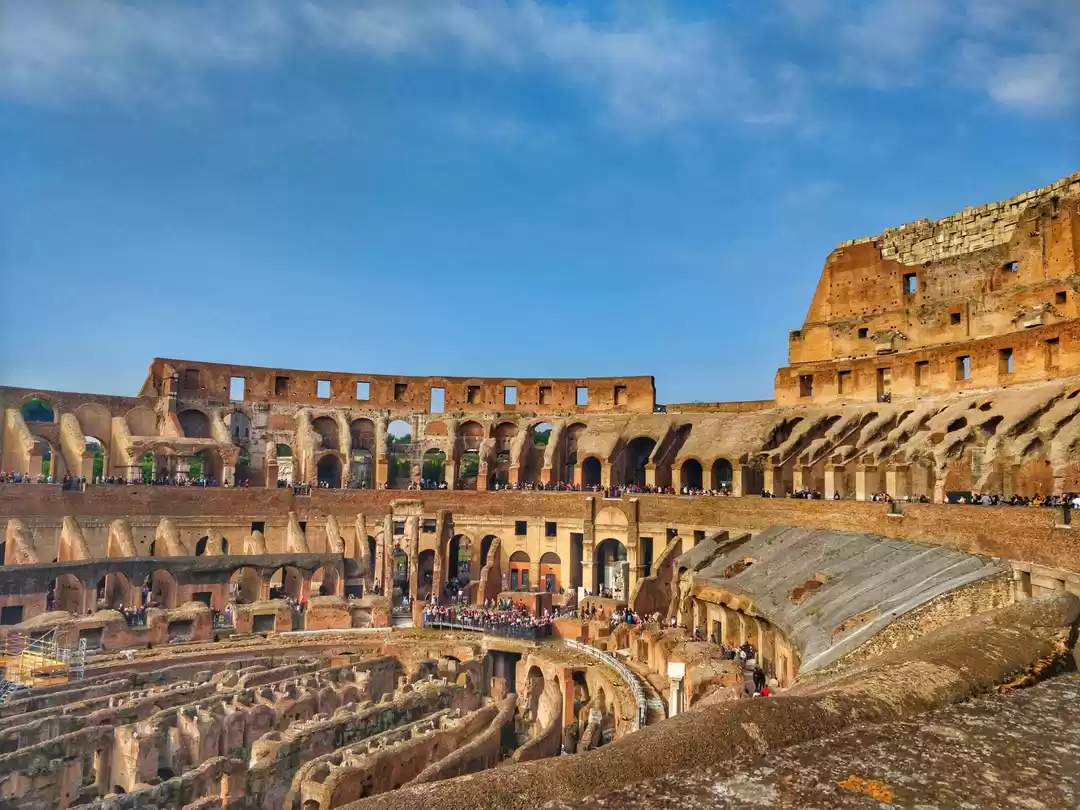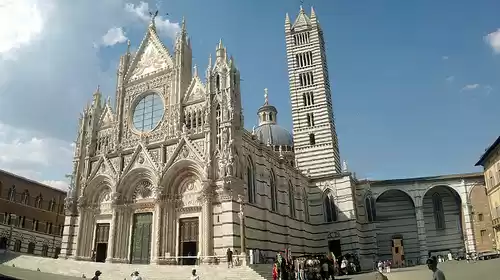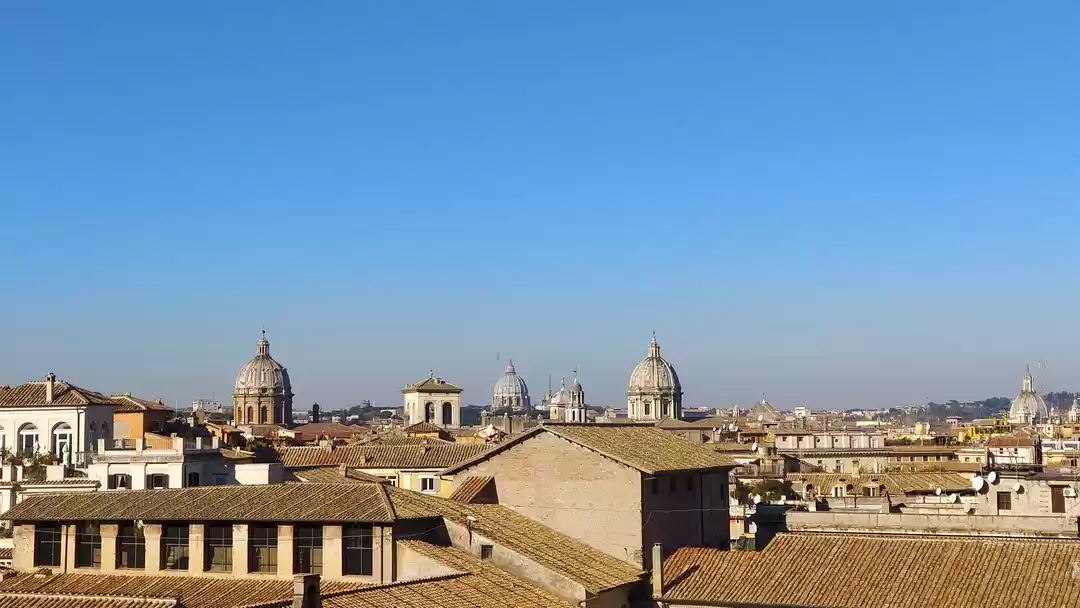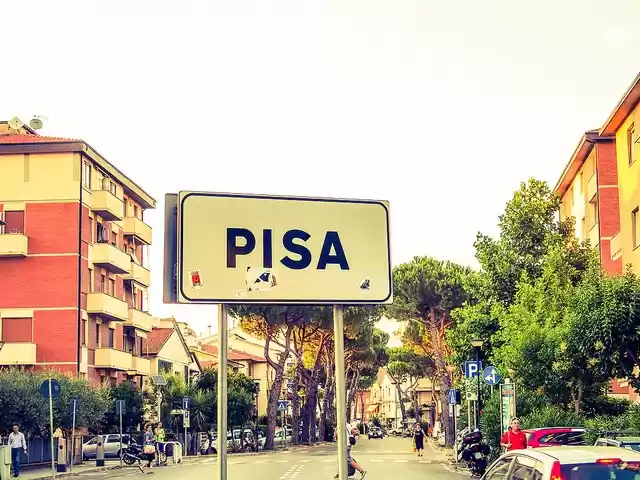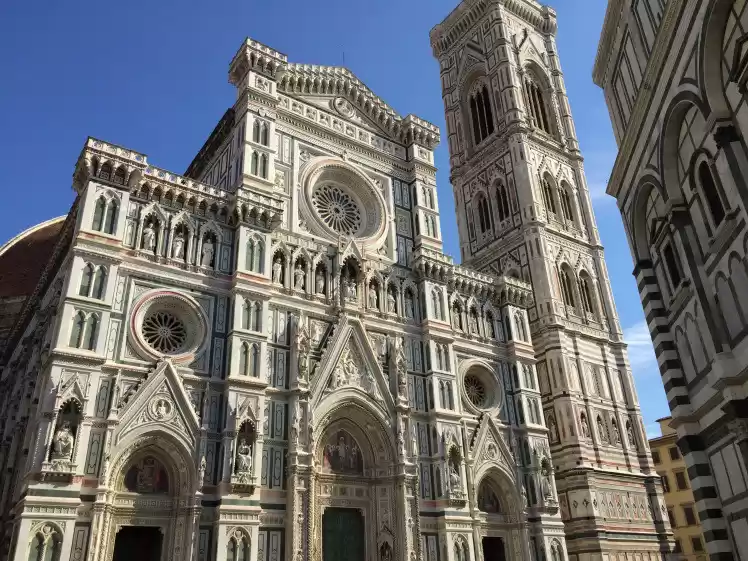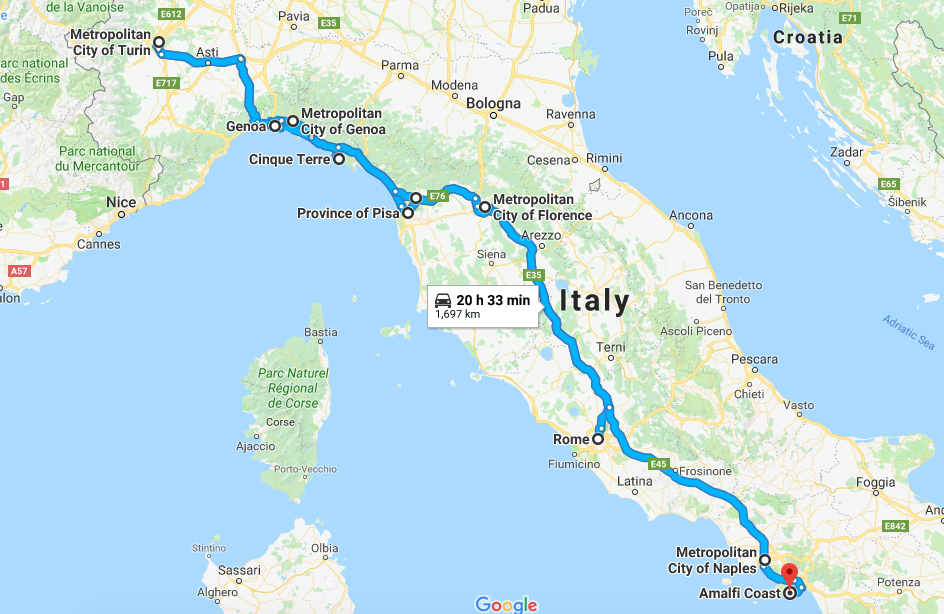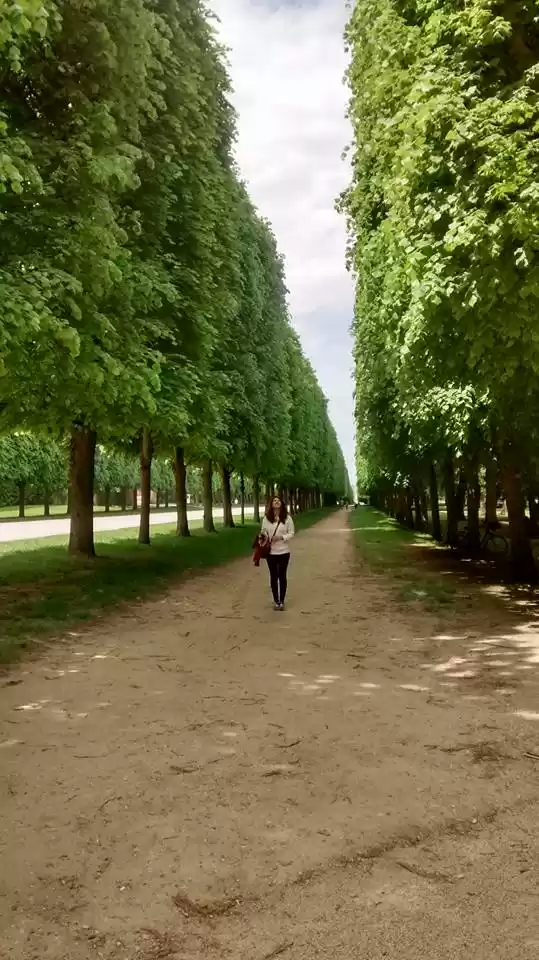
We took a FlixBus from Roma Tiburtina to Pisa. FlixBus is a relatively cheap operator that provides excellent connectivity throughout Italy. The bus ticket cost us €10 per person.
The journey through the green and serene Italian countryside was very calming. I was asleep before we hit the main highway.




The weather was chilly when compared to Rome. The air felt much fresher and the grass seemed much greener. The parking lot at the bus station already had us in love with Pisa.

We headed towards the general direction of Piazza del Duomo also known as Campo dei Miracoli (Field of Miracles) from where we could see the Leaning Tower peeking at us.
We grabbed our first bite of Italian pie on the way from a small outlet run by a cheerful old couple. This was undoubtedly the second best pizza I had in Italy. The meal cost us €2 per person.





14:00 hrs | Campo dei Miracoli - €26
After our make-do lunch, we crossed the road and walked into the Piazza del Duomo. We bought a combination ticket covering admission to the Baptistery, Camposanto (cemetery) and Museo delle Sinopie (museum) for €18 per person. The ticket for Leaning tower of Pisa is sold separately and costs €8 per person. The tickets can be purchased from the office inside the Museum. Admission to the cathedral is free, however one has to show a valid ticket for one of the other sights as proof. The total ticket cost us €18 + €8 = €26.
Note: The entry ticket is required only if you plan to actually enter the structures (climb the tower, view the cathedral and baptistery from inside, walk through the cemetery). Budget travelers can enjoy the outfields of this campus completely free of cost.



Leaning Tower of Pisa
The building of the tower began in 1173 under the supervision of architect Bonanno Pisano. Unfortunately, he was forced to abandon construction as the tower started leaning after only three of its planned seven tiers were built. The construction resumed in 1272 with artisans and craftsmen attempting to keep the tower rising without falling. The work was once again suspended, this time due to war. The construction was finally completed in the second half of 14th century, however, the tower was already leaning when it was unveiled and continued to tilt for the next 600 years till 1993 when the tilt was finally halted by a major stabilization project. The reason for the tilt is attributed to the steady worsening of the weak subsoil layer on which the tower is built.

We stayed at Youth Station Hostel in Rome, near the Roma Tiburtina bus station. We woke up early in the morning and had a breakfast of bread and cheese which we had purchased from a supermarket the previous night. It is essential to note that European countries are generally expensive to the Indian consumer. A decent takeaway breakfast will cost around €3 per person. The bread and cheese cost us €5 and three people were able to share the meal, with some food still remaining. Another thing to note is that coffee at hostels is cheaper as compared to coffee purchased outside.

The pre-Pisa experience in Rome
Since our Jet Airways flight to Milan had been cancelled, and we ended up landing in Rome, our initial plan to hike the Cinque Terre was out. However, the Cinque Terre hike was only planned for half a day and we were supposed to be headed for Pisa by afternoon.
As we were already experienced in salvaging cancelled parts of our trips (read how we made it to Alexandria after our flight to Cairo was delayed here), we decided to catch a bus from Rome to Pisa and follow our planned itinerary from there.
Battistero
Pisa's unusual round Baptistery has one dome piled on top of another, each roofed half in lead, half in tiles and topped by a gilt brinze John the Baptist. The lower level of the arcade is Pisan-Romanesque and the pinnacled upper section and dome are Gothic in architecture.


Duomo
Pisa's magnificent Romanesque Duomo has a striking tiered exterior with cladding of green-and-cream marble bands. The vast columned interior is capped by a wooden ceiling decorated with 24-carat gold, a legacy from the period of Medici rule.





After satisfying our hunger, we headed for the bus station which was around a mile away from the hostel. The bus was to leave at 07:30 hrs. We hurried through the empty early morning streets of Rome and made it to the bus station with five minutes to spare.
The road that you see in the above pictures is a through road which connects the east end of the Piazza to the west with two streets branching out towards south. The road is open at all time and free for use by public.


Entry to the Leaning tower is timing-slot based. The time is mentioned on the ticket and you have to report to the entry at-least 15 minutes before the allotted time. Bags are not allowed inside the tower. A cloak room is available to the north of the tower for safekeeping of luggage. However, the cloakroom facility is only for the tower visit. Tourists are expected to collect their luggage post the tower visit and not leave it there while they enjoy the other attractions.
Luckily our entry slot for the Leaning tower was at 15:30 hrs. We decided to spend some time clicking pictures before depositing our bags in the cloakroom. We had assessed that there would be sufficient time for us to explore the Baptistery, Cathedral, Camposanto and the museum as the summer timings are extended beyond 17:00 hrs in the evening.




In the lawns next to the tower is a sculpture of the fallen angel who appears broken from falling off the tower. Medusa's head is inscribed at the back of his right wing. The sculpture was crafted by Polish sculptor Igor Mitoraj.



By 15:00 hrs we had checked in our luggage at the storage facility and were in line to enter the leaning tower.
This 56m tall majestic tower lives up to its name, leaning at a startling 3.9 degrees off the vertical. An estimated 1 million tourists flock to Pisa every year to witness this beautiful architectural blunder.

The tilt is no joke. It is very apparent when you climb the tower, with your body constantly leaning to one side as you scale the worn out dented marble steps which are evidence of the towers global popularity.



The tower is also famous for being the location where Galileo discovered that objects fall with the same acceleration (g) irrespective of their mass. His experiment proved his prediction true while at the same time disproving Aristotle's theory of gravity (which stated that objects fall at speed proportional to their mass). The closed internal column of the tower would have provided a perfect test-bed with no wind or other external factors other than gravity affecting the fall of his test articles - a feather and a stone.


We climbed the slanting stairs of the tower to reach the top, covering over 280 steps. The top offers a panoramic view of the town of Pisa. This was the first tall building we had climbed after landing in Italy and the view of structured arrays little and beautiful of houses was very pleasant to the eye.





There are seven bells on top as the tower is officially the Duomo's Campanile (bell tower).



We spent a good 45 minutes atop the tower, clicking pictures and just sitting, soaking in the green countrysides of Italy.








After getting down, we decided to collect the luggage after covering the Cathedral and the Baptistery.
The three 16th century bronze doors at the main entrance illustrate many biblical scenes such as the immaculate conception of the Virgin and birth of Christ, the road to Cavalry and crucification of Christ, and the Ministry of Christ. Unfortunately, one door was under renovation when we visited.

The paintings inside the cathedral are remarkable. The works of art are a culmination of efforts by many prominent artisans.



The extraordinary early 14th century octagonal pulpit sculpted from Carrara marble by Giovanni Pisano features nude and heroic figures which portray the episodes from the life of Christ.

After admiring the artwork inside the cathedral, we headed for the Baptistery.
A little known fact is that Galileo Galilei was baptised in the octagonal font of this Baptistery.



You can climb to the upper level of the dome and experience its remarkable acoustics and echo effects.



Pisa
We reached Pisa by 13:00 hrs. The journey was comfortable and we were fully recharged to explore our first city in Italy.
After exiting the Baptistery we engaged in a little photoshoot doing what all tourists who come to Pisa do; click that cliched picture with the tower. However, we did try our own imagination.









Camposanto
Camposanto is the final resting place for many prominent Pisans. It is arranged around a garden in a cloistered quadrangle. Soil shipped from Cavalry during the Crusades is said to lie within the white walls of this hauntingly beautiful cemetery.


The next place in line was the cemetery. Before heading to Camposanto we collected our luggage from the cloakroom.
The courtyards display salvaged frescoes which were damaged during WWII. This particularly graphic fresco aptly titled 'Inferno' is a remarkable illustration of Hell attributed to the 14th century painter Buonamico Buffalmacco.










Another fresco by the same artist 'Triumph of Death' draws relevance from the recurring plagues in the 12th century.




Camposanto is lined with life like sculptures of the people buried here. Most notable of them are the bankers from the Medici family and the famous Italian mathematician Fibonacci. Each article tells a story about the person.











Not that I am proud of it, but I did do some goofy stuff.



We also manged to get some good pictures in the dancing sunlight.


Tired from hauling our bags through the corridors of the cemetery, we retreated to the lawns of the Campo dei Miracoli to enjoy the cool evening sun along with all the other tourists and locals who were already there.

The lush lawns were speckled with couples who had come there to enjoy the evening.






Museo delle Sinópie
Home to some fascinating frescoes, this museum safeguards several Sinópie (preliminary sketches) of the frescoes put up in Camposanto. These were drawn by artists in red earth pigment on the walls of the Camposanto in the 14th and 15th century before the frescoes were overpainted.










19:45 hrs | Dinner - €15
We enjoyed a meal of Margherita pizza and Ribollita (a bread soaked soup). The simple Margherita pizza I had here was the best pizza I had in Italy. And trust me , we tried a lot of pizzas over our 10 day trip. The food was exquisite. I wonder how a simple dish with just tomato sauce, cheese and basil have so much taste. We paid €15 in total (including tip) for the dinner.


After lazing around for a while we proceeded to the museum which was the last place of attraction to be visited in Pisa as per our itinerary.
Being located at a higher latitude, sunset in Italy during April is usually after eight in the evening. By the time we left the museum, the waning sunlight had painted a mesmerizing picture on the Piazza which was otherwise soaked in sun during the day.



We walked into the two streets that branched off from the Piazza searching for souvenirs and some place to eat. All the eateries around the Piazza were quite expensive and out of our budget. We walked back towards the place where we had had the pie in the morning. Unfortunately the place was closed and we ended up trying out this cozy little bar right opposite the street.



We had to catch our train to Florence at 2230 from the Pisa central station. We walked the 2.5km to the station crossing the Ponte della Cittadella bridge over Arno river.

After our dinner, we again went to Piazza del Duomo to catch a last glimpse of the leaning tower. The lawns that were filled with crowd in the morning were now deserted.





22:30 hrs | Train to Florence - €9
We bid farewell to Pisa at 22:30 hrs and caught our Trenitalia train to Florence. We had booked the tickets through the GoEuro app. All our travel tickets were pre-booked as part of finalizing the itinerary.
I hope you enjoyed this account of our experience in Pisa. The adventures in Florence are covered in the next blog. Click here to read about the Day 2 adventures and how we spent an entire night at McDonald's !
Follow me on Tripoto for more itineraries of exciting adventures. Connect on Strava to follow my running, riding and calisthenics activities. Find me on Instagram and Facebook for any queries or help required with planning your next adventure.
Until next time.
Pisa
One of the many things that come to mind when somebody mentions Italy is the Leaning Tower of Pisa. Apart from this architectural project gone wrong, Pisa is home to many noteworthy sights. Pisa is also home to many acclaimed scientists and mathematicians including Galileo Galilei and Fibonacci. This compact and compelling city has an enviable portfolio of well-maintained Romanesque buildings, Gothic churches and Renaissance piazzas.
Traveler Introduction

Expenditure Estimate
This day involved our travel from Rome to Pisa, food at Pisa and the entry tickets. A breakdown is given below. All costs are per person.
a) €19 for travel: €10 (bus from Rome to Pisa) + €9 (train from Pisa to Florence)
b) €10 for food: €3 (breakfast) + €2 (lunch) + €5 (dinner)
c) €26 for entry tickets: includes Leaning tower, Baptistery, Camposanto, Cathedral and Museum
We were in and out of Pisa in less than €55 per person. The breakdown given above doesn't account for purchase of souvenirs.
The airport is quite far from the city. We had to catch a train to reach the part of the city where our hostel was located. On our walk to the hostel we withdrew some cash from an ATM. Kindly note that for a Forex card, in addition to the convenience charge of your card provider, the ATM service provider will also charge a convenience fee. The fee is usually shown on the last screen of the ATM when finishing the transaction. The charges are zero if you are using an ATM located in the bank. For ATMs that are located at the airport or in the streets will charge upto €5 extra.



